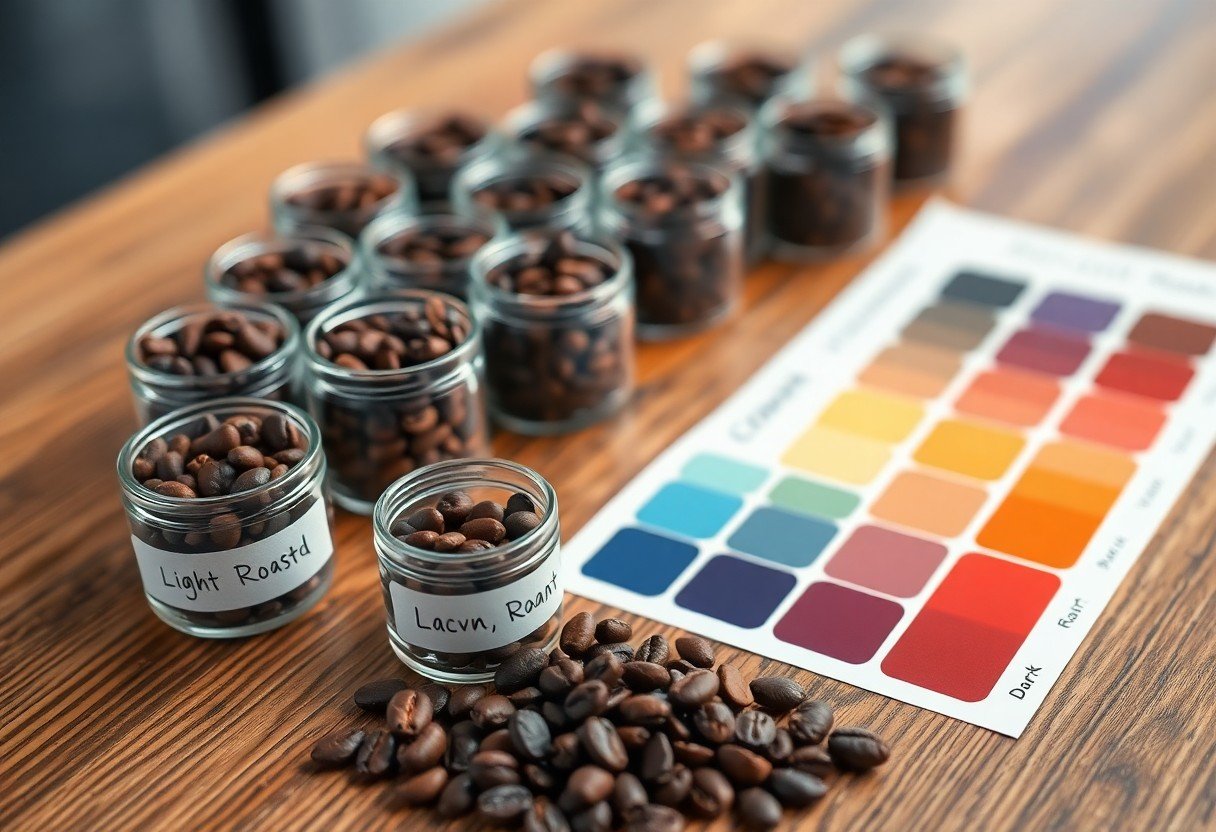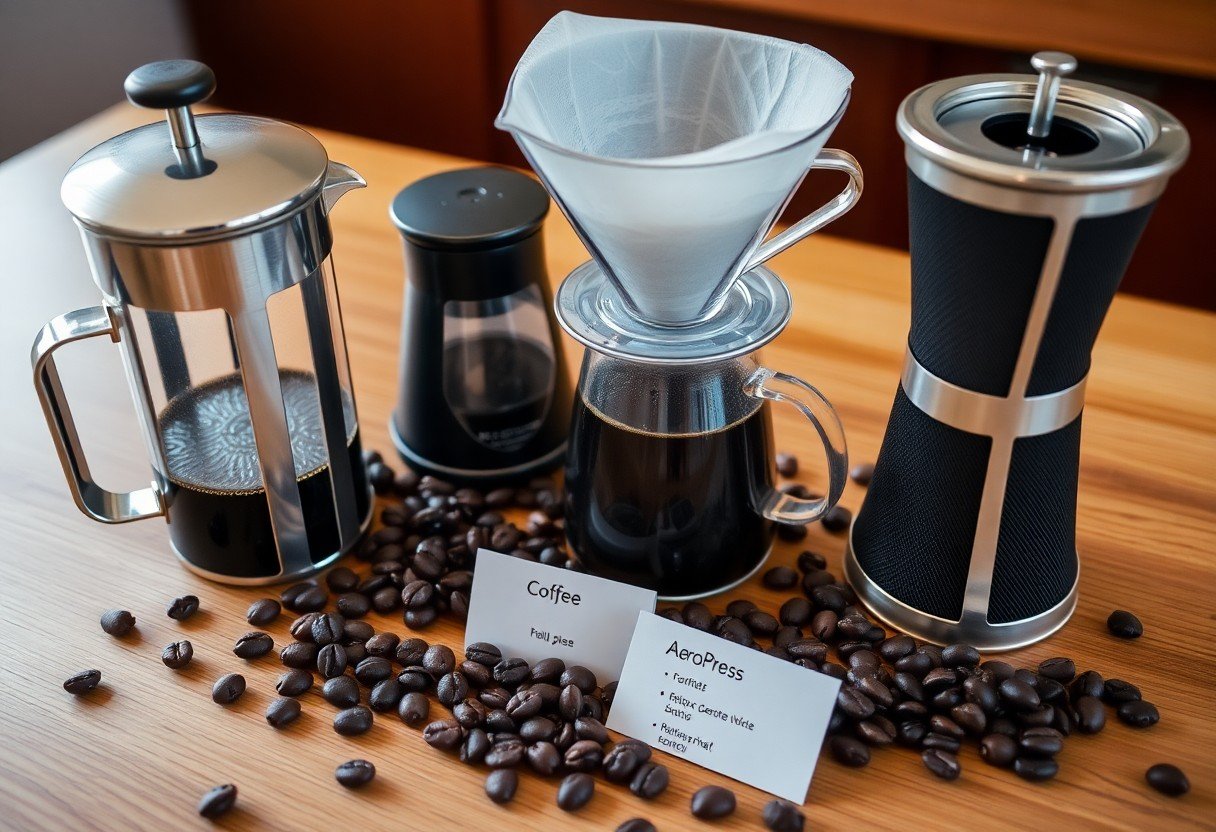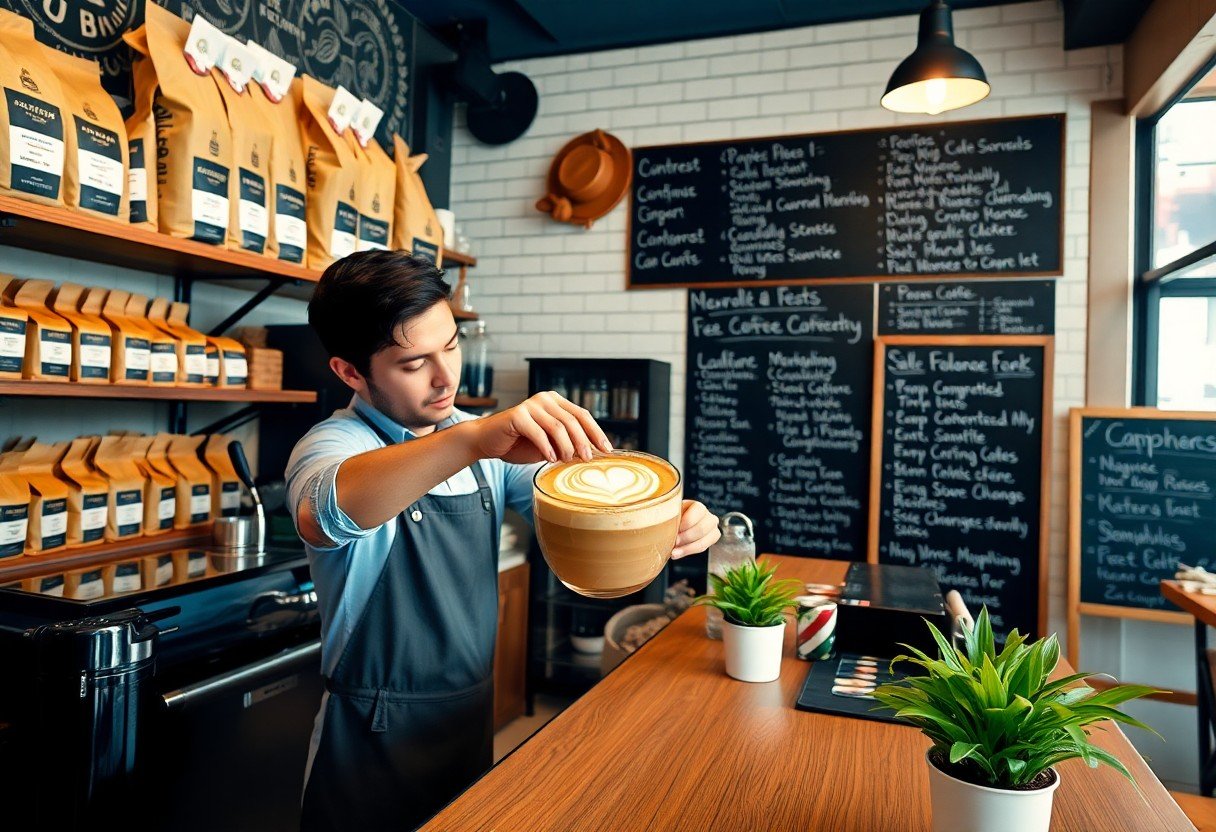Over the years, coffee culture in Australia has flourished, introducing you to a vibrant array of terms and jargon that may seem daunting at first. This glossary is designed to equip you with necessary terminology you’ll encounter in Australian roasteries, ensuring you can navigate your coffee journey with confidence. Whether you’re ordering your favorite brew or chatting with a barista, understanding these terms will enhance your appreciation for the craft of coffee making.
Aroma: The Unsung Hero of Coffee Experience
Aroma serves as a vital aspect of your coffee experience, often overshadowed by taste. When you inhale the rich, diverse scents wafting from freshly brewed coffee, you encounter a complex array of notes that engage your senses. From floral and fruity to nutty and caramelized, these aromas create an inviting atmosphere, influencing both your anticipation and enjoyment. Understanding aroma unlocks a deeper appreciation for each cup, guiding your preferences and enhancing your sensory journey.
Intricacies of Aroma Identification
Aroma identification involves training your nose to perceive various scents, each contributing uniquely to the overall coffee profile. You may encounter specific terms like “citrus,” “chocolate,” or “spicy,” each linked to distinct origins and processing methods. The art of distinguishing these aromas requires practice and mindfulness. Participating in cupping sessions at roasteries can sharpen your skills, allowing you to detect nuanced variations in different bean varieties and roasting techniques.
The Connection Between Aroma and Flavor Profiles
Your perception of flavor is deeply intertwined with aroma. In fact, up to 80% of what you perceive as taste derives from your olfactory senses. As you sip your coffee, the aroma enhances or diminishes specific flavor notes, creating a multifaceted experience. The interplay between aroma and flavor can elevate a simple cup into an extraordinary adventure. For instance, a coffee with bright citrus aromas may taste smoother and more vibrant compared to one where your olfactory senses are met with bold, earthy notes.
Exploring flavor profiles through aroma can reveal interesting surprises. For instance, a coffee that initially presents a sweet, caramel aroma might shift toward a more acidic flavor upon tasting, creating a dynamic interplay that intrigues your palate. Engaging with these elements not only deepens your understanding of coffee but also enhances your overall appreciation for this beloved beverage.

Roast Levels: Decoding the Spectrum
Light, Medium, and Dark: The Flavor Journey
The roast level of coffee significantly influences its flavor profile, making it crucial to understand the nuances between light, medium, and dark roasts. Light roasts often showcase bright acidity and floral or fruity notes, allowing the coffee’s intrinsic qualities to shine through. As you sip, you may detect hints of citrus or berry, typical of beans sourced from regions like Ethiopia or Colombia. This roast level preserves more of the natural flavors, often leaving a cleaner finish on the palate.
Medium roasts strike a balance between acidity and body, introducing a harmonious blend of caramel sweetness and nutty characteristics. You might encounter flavors reminiscent of chocolate, stone fruits, or even spices. This roast level is popular among coffee drinkers transitioning from lighter to darker options, as it offers a fuller mouthfeel without overwhelming the bright notes. Dark roasts, on the other hand, reveal bold flavors, often showcasing a smoky or bittersweet profile due to the longer roasting time. Beans from this category, typically used in espresso, deliver a rich, hearty cup that may finish with a lingering aftertaste.
How Roast Levels Impact Caffeine Content
Common misconceptions surround the caffeine content across different roast levels. Intuitively, you may think that darker roasts pack more caffeine due to their bolder flavor. However, the reality is that caffeine content decreases slightly during the roasting process. A light roast often retains more caffeine than darker varieties, as the bean size expands and the caffeine breaks down with extended heat exposure. This means, per volume, light roasts may actually provide a more potent caffeine kick than their dark counterparts.
To put it into perspective, a single 8-ounce cup of light roast may contain approximately 350 mg of caffeine, while a dark roast may register around 300 mg. If you’re aiming for a stronger caffeine boost, consider exploring light roasts for your morning brew. For those interested in diving deeper into how these flavors and caffeine levels contribute to your coffee experience, check out The Hip Lingo and Coffee Descriptions Behind Your … for more insights.

Brewing Methods: Techniques That Define Taste
Classic vs. Contemporary: French Press to Cold Brew
French Press remains a timeless choice, allowing you to steep coarse coffee grounds in hot water for several minutes. This method extracts rich flavors and oils that create a full-bodied cup. Perfect for those who appreciate the heavy mouthfeel and robust taste, it contrasts sharply with the cold brew technique, which involves steeping fine coffee grounds in cold water for an extended period, typically 12 to 24 hours. The result is a smooth and mellow brew with a lower acidity and a slightly sweeter profile, making it a refreshing choice, especially in warmer months.
Modern brewing techniques like Aeropress and siphon brewing illustrate the diversification of coffee preparation methods. The Aeropress uses air pressure to force hot water through coffee grounds, yielding a concentrated coffee similar to espresso. Siphon brewing, while visually striking, employs vapor pressure and vacuum to create a clean and aromatic coffee, showcasing the intricacies of extraction. Each of these methods serves different preferences and situations, highlighting how your choice in brewing can significantly influence the final flavor profile.
The Role of Grind Size in Brewing Success
The size of your coffee grounds directly influences the extraction process, affecting taste, aroma, and overall quality. For methods like French Press, a coarse grind is important to prevent over-extraction and bitterness. In contrast, espresso requires a fine grind to maximize extraction under pressure, highlighting how each brewing technique demands a specific grind size to achieve optimal flavors. Understanding this relationship can transform your coffee experience, allowing you to tailor your brew to achieve the desired intensity and character.
Precision in grind size cannot be overstated. For instance, using a medium grind for a pour-over method can lead to a balanced extraction, whereas a too-fine grind might result in a bitter taste due to prolonged water contact. Conversely, a too-coarse grind in a quick brewing method can yield weak flavors and a diluted experience. Investing in a quality grinder can make a significant difference in your brewing success, as uniformity in grind size enhances consistency and pulls out the nuanced flavors locked within the beans. Experimenting with grind sizes across different brewing methods can lead to delightful discoveries in your coffee journey.

Specialty Coffee: Beyond the Average Cup
What Classifies Coffee as ‘Specialty’?
Specialty coffee is defined by a rigorous grading system, starting with the green coffee bean. To qualify as specialty, coffee must score 80 points or higher on a 100-point scale, assessed by certified cuppers based on distinct criteria such as flavor, acidity, body, and aroma. This classification means your cup of coffee has been carefully sourced, meticulously processed, and skillfully roasted, often highlighting unique characteristics stemming from specific regions or growing conditions. You may encounter coffee from a single origin, showcasing its unique qualities that cannot be replicated by blends.
The journey from farm to cup is also a key aspect of specialty coffee. Direct trade practices often play a role, ensuring that farmers are paid fairly and actively involved in the production process. This relationship fosters high-quality beans, allowing you to experience not just the taste but also the story behind the coffee. Seek out roasters who provide transparency through detailed notes on the coffee’s specific attributes and origins, elevating your drinking experience.
The Impact of Terroir on Flavor
Terroir refers to the environmental factors that affect a crop’s characteristics, including soil composition, altitude, climate, and even the surrounding ecosystem. In coffee, these elements significantly influence flavor profiles. For instance, beans grown at high altitudes often exhibit brighter acidity and more complex flavors, while those from lower altitudes may yield a heavier, fuller body. The relationship between the land and the resulting coffee is one that defines the uniqueness of your brew, giving it a distinct identity based on where it’s grown.
Exploring the nuances of terroir can lead to fascinating discoveries, such as the fruity notes in Ethiopian Yirgacheffe, which are a direct result of the region’s unique climate and heirloom varietals. As you sip your coffee, consider how the specific environmental conditions crafted each cup. It’s this connection to place that not only enhances the drinking experience but also educates you about the diverse world of coffee cultivation.
Sustainable Practices: The Ethics of Coffee Sourcing
Fair Trade vs. Direct Trade: What’s at Stake?
Fair Trade certification aims to ensure that farmers receive a minimum price for their crops, which helps protect them from market fluctuations. You may encounter coffee labeled as Fair Trade, indicating that it adheres to specific economic and social standards designed to benefit producers. This system promotes transparency and equity in pricing while empowering farming communities. However, while Fair Trade offers promising benefits, it can sometimes unintentionally limit farmers’ earnings if they produce high-quality beans that exceed the basic standards set by Fair Trade. In such cases, farmers might miss out on additional profits that could be obtained through selling directly to specialty roasters.
Direct Trade, on the other hand, eliminates the middleman, allowing quality to dictate pricing based on the actual value of the beans. As a coffee lover, when you opt for beans sourced through Direct Trade, you’re supporting the relationship between roasters and farmers, often resulting in higher ethical standards and better quality products. This model provides farmers with a more significant share of the profits, fostering a direct connection that can lead to mutual benefits. You might notice a strong emphasis on specificity, like the region or even the farm itself, revealing the story behind your cup.
The Movement Towards Organic and Eco-Friendly Choices
The shift towards organic coffee reflects a growing awareness of environmental issues associated with conventional farming practices. You’ll find that organic coffee production emphasizes biodiversity and sustainable soil management, steered by practices that eschew synthetic fertilizers and pesticides. By choosing organic, you support a system that promotes health for both the environment and the farmers through reduced chemical exposure. Many Australian roasters prioritize sourcing organic beans to reflect this ethos, aligning with the values of consumers who prioritize eco-conscious products.
This movement is gaining traction as consumers, especially millennials, become increasingly aware of the environmental impact of their food choices. According to a report from Research and Markets, the global organic coffee market is projected to reach $11.7 billion by 2025, evidencing a robust interest in sustainable practices. Coffee growers and roasters are responding by adopting regenerative agricultural methods, which not only benefit the ecosystem but also enhance the flavor and quality of the beans you enjoy. By choosing organic and eco-friendly coffees, you contribute to the preservation of biodiversity and support a more sustainable industry.
Final Words
The terminology used in Australian roasteries can significantly enhance your coffee experience and appreciation. By familiarizing yourself with these crucial terms, you’ll not only gain a deeper understanding of the craft but also enhance your ability to communicate your preferences and expectations when selecting your coffee. This knowledge empowers you to explore various flavors and brewing techniques with confidence, leading to a richer appreciation for each cup you enjoy.
As you navigate the vibrant world of Australian coffee, leveraging the insights found in this glossary will help you engage more meaningfully with baristas and fellow coffee enthusiasts. Your newfound vocabulary will open up opportunities to explore into discussions about roasts, origins, and brewing methods, fostering a community that celebrates the art of coffee together. Embrace this knowledge, and take your coffee journey to new heights.
FAQ
Q: What is a coffee blend?
A: A coffee blend is a combination of coffee beans from different origins or varieties, mixed together to create a unique flavor profile. Australian roasteries often craft blends to achieve balance and complexity in taste.
Q: What does single origin mean?
A: Single origin refers to coffee sourced from a specific geographic location, such as a single farm or region. This term highlights the unique characteristics and flavors derived from that particular area, which can be appreciated in Australian coffee culture.
Q: What is cupping?
A: Cupping is a standardized method for evaluating the flavors and aromas of coffee. In Australian roasteries, cupping sessions are conducted to assess quality, detect defects, and explore different taste notes among various coffee beans.
Q: What is the difference between light roast and dark roast?
A: Light roast coffee is roasted for a shorter time, preserving more of the beans’ original flavors and acidity. Dark roast coffee is roasted longer, resulting in bold, smoky flavors and a fuller body. Australian coffee enthusiasts often have preferences based on these distinct roasting styles.
Q: What does ‘third wave coffee’ signify?
A: Third wave coffee represents a movement that focuses on high-quality coffee as an artisanal product. It emphasizes transparency in sourcing, sustainable practices, and brewing methods that highlight the unique flavors of coffee, which is prevalent in many Australian roasteries.

